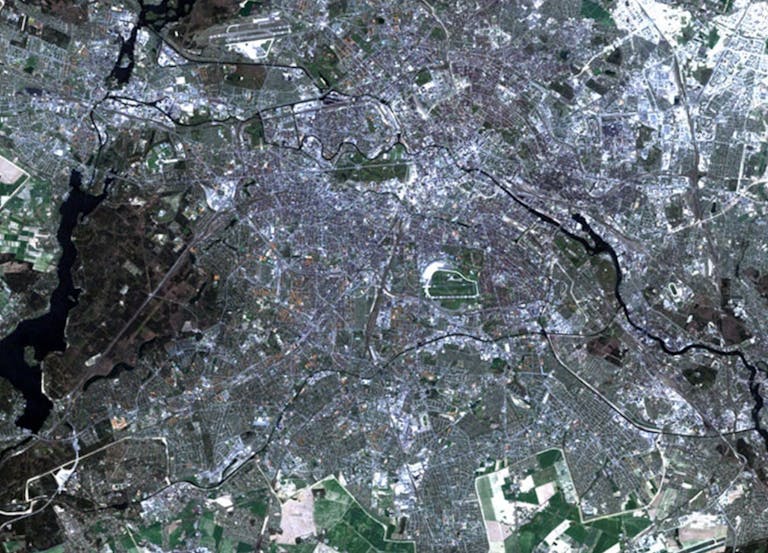Behind the scenes: American Chordata magazine
Named after the obscure scientific category that encompasses most intelligent life, new literary magazine American Chordata isn’t afraid of the high brow, and yet editor and founder Ben Yarling is determined that his new title is accessible to as many people as possible.
Launching as both a paid-for print magazine and as a free online PDF, American Chordata’s quality content is only a click away. I caught up with Ben to find out more about his distribution strategy, and his future plans for the magazine.

Can you explain the magazine’s name? You lost me at Chordata…
I guess the short version – the version I gave my mum – is from reading Joseph Brodsky’s book, Watermark, in which he references ‘chordata’. It’s a scientific category of animals that includes humans and most other intelligent life; mammals, reptiles, birds and so on.
So using it in the title is a way of signalling respect for similarity and difference at the same time. And then ‘American’ because we like the idea of contributing to an American culture of intelligent thought. And in a more pragmatic way… so that we show up closer to the top in alphabetised lists.

Where did the idea for American Chordata come from?
Putting together a literary magazine is something I’ve been meaning to do for a long time now. I work in publishing in New York, and I realised that I’m surrounded by these super-intelligent people with the right combination of skill sets to make a great magazine. And I was fortunate in that everyone I talked to – I had a dream team in mind at the outset – was into the vision for it. The timing was right.
We’re founded on the belief that a good literary magazine can celebrate sophisticated design and earnest expression – contemporary writing that isn’t slick or sarcastic – on the same page. The aim was to create a luxury-looking, beautifully illustrated magazine that we wanted to make a venue for challenging, emotionally detailed writing. So we hit the launch button.

Why now?
Now seems like an exciting, inspiring time for magazine culture. It’s not nostalgic; it’s forward looking. It’s about artefacts and possibility and people cherishing this medium in a new way, and there’s a lot of amazing stuff out there.
How did you land on the visual tone?
Bobby Doherty, our art director, had a big influence on that. From what I understand he was looking for things with a bit of nostalgia and colour. Design-wise, we put a lot of time into working out the balance of fun and flirty – yes, that word was in there. Not too over the top. Classic. Business casual. And I’m really happy with how it came out.

I really enjoyed the flow of the magazine – it must’ve been fun flat planning it! How did you set about helping the pictures and words complement each other?
Once we had all our selections made, it was a lot of fun to see how it all fit together. I had some great conversations with Bobby about placing. We wanted to avoid making literal connections between the photography and the stories. The subtleties – how they complemented each other – were more interesting to us.

What do you hope readers will get out of American Chordata?
I love that good stories and poems can give words to these experiences you might have had, or can increase your frame of reference beyond the scope of your own life. And in terms of making a magazine, I definitely like the idea of creating something that people will be able to cherish and keep.
You’ve made the magazine available as a PDF on your site. How do you balance both print and digital experiences?
We put a lot of thought into it. I like the idea of accessibility – you can reach more people more quickly when you have an electronic, shareable version like that, and it’s important (and cool) for us to be able to put it in front of people as we’re finding our feet. Plus, the PDF format is a way of having an online publication that’s still an artefact, rather than free-flying content.
But we want to avoid the idea that we’re an online magazine, because print is important to us. It’s something that we want to increasingly emphasise as we move forward, but you know, it takes money and it takes an existing reach, like a subscriber base.

So setting up subscriptions is the next step?
Right now we’re focusing on stocking individual book stores. Subscriptions are definitely a goal for the future, because as an ad-free magazine that’s where our money is going to come from. But ultimately, it’s not really a profit-making endeavour. I want to gain non-profit status.
What are you looking forward to?
Building our readership and working on issue two – we have an active call for submissions that’s open until 31 July. It’s kind of a crucial moment in terms of showing our scope of possibility, so I’m looking forward to putting this out again in the autumn.
—
Read more independent magazines – sign up to Stack and we’ll deliver a different one to your door every month
Photo credits: Banjo McLachlan and Bobby Doherty






